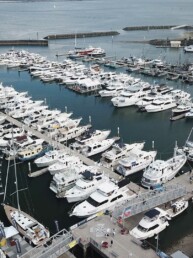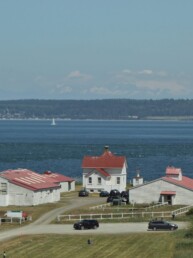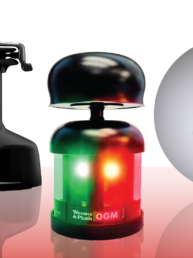A Complicated Delivery, An Unplanned Adventure, and One Family’s Maiden Voyage
From the January, 2021 issue of 48° North.
In March 2020, the Coronavirus hit our hometown of Nelson, British Columbia, and an isolated quarantine followed. After getting over the initial shock of living in lockdown — being the outgoing adventure-seeking outdoor enthusiasts the are — my parents, Erica Konrad and Mike Bowick, didn’t hesitate in planning their newest escapade.
Covid had put a pause on many plans, including the annual Race to Alaska my father and his team had been training for all of 2019. His team, The Kootenay Pedalwheelers, were to compete in the 750 mile race from Port Townsend, Washington, up the Inside Passage to Ketchikan, Alaska, in June of 2020 on their Flying Tiger sailboat named Amurskaya. Upon the cancellation of the race, his team instead circumnavigated Vancouver Island without a motor. He arrived home inspired to buy a bluewater boat to further explore the coast.
After a couple weeks ogling dreamy boat options online and shopping for those available around the region, the papers were signed to purchase a Northwest 32 pilothouse sailboat located in Portland, Oregon. Turns out, sailing along the coast wouldn’t be the only navigation we would be doing. The next — and possibly most difficult — step of the voyage would be getting the sailboat from Portland, Oregon across a closed border to Victoria, British Columbia.
The plan was simple … or so it seemed. Due to Covid-related border protocols, we were limited to hiring a commercial captain to bring our boat into Canada. The plan was for our captain to sail up the coast, cross the Canadian border, and deliver the boat to Victoria, where we would meet him and then embark on a trip around the Gulf Islands. We were all set, we thought.
Without incident, the boat had made it up the coast from Portland to Port Angeles, where our captain was to then cross the Juan de Fuca Strait and dock in Victoria. On our end, bags were packed, meals were prepared, and we were ready for the 10 hour drive to meet, provision, and take possession of the boat. But all of a sudden, there was radio silence from our captain.
Trip on hold, tensions rose; stress set in and disappointment with it. The captain had skipped ship and bailed on the boat without explanation. After a frantic few days of phone calls while we sat in the dark, a local marine mechanic, Erik Hogenson, confirmed that the boat was safe in port, just unfortunately in the wrong country. While we searched for an alternative form of transport, Erik informed us a new issue had arisen, the black water holding tank was leaking. Erik saved the day, yet again, and literally went through sh*t for us.
Physically, the boat was so near, yet it felt worlds away. We made many inquiries to commercial captains as our search for a solution to bring our boat into Canada wore on. Eventually, we stumbled upon one — a captain and a solution — and Captain Vern Lhotzky from Victoria graciously agreed to help us out.
Eager to get our hands on the boat, we set off the following day and drove down to Vancouver Island to begin our trip of sailing around the Gulf Islands. After staying the night in a hotel outside of Victoria in preparation to meet Vern the following day, we woke up to one of the only foggy days of the entire summer. Upon anxiously calling our captain, he confirmed he was unable to make the delivery that day, and due to prior commitments wouldn’t be able to try again for four days. Everyone’s spirits were down, and we were stuck a full day’s drive away from home.
Unwilling to give up, and with four days to kill, my parents decided to make the most out of a trip that, at this point, felt doomed. There was a tent that had fortunately been left in the truck from a previous trip, and we had brought along my brother’s 14-foot flat-bottom Jon Boat as a dinghy. These elements, combined, proved to be a solution to begin exploring the coast. We loaded our tent and gear into the small boat and piled in to explore the Gulf Islands near Sidney, BC.
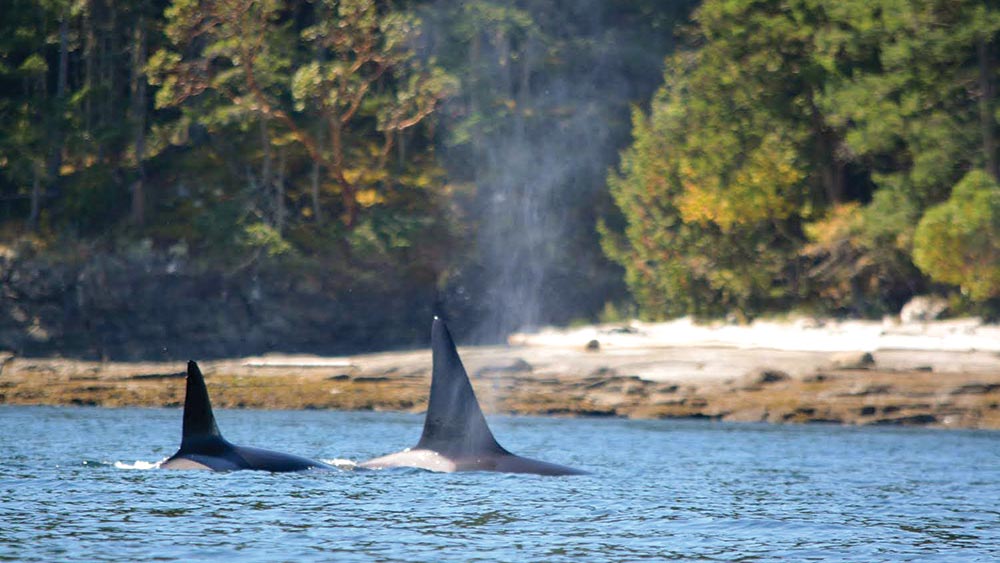
Our trip was off to a great start. Even though the little boat was struggling to carry all the weight, it was a beautiful sunny day, and no one seemed to mind. As we puttered along, we rounded an outskirt of rock and whale spouts caught my attention! My brother quickly shut off the engine and we watched in awe as a mother killer whale and her calf slowly passed by. Such a breathtaking experience, we interpreted it as a sign that our mishaps occurred for a reason.
We spent the following few days exploring and searching for all the fluorescent critters inhabiting the tidepools. The first two nights, we camped on the most beautiful outcrop of grassy rock on Portland Island, part of the Gulf Island National Park Reserve, where a hike around the island would reveal Royal Cove and Princess Bay for future mooring possibilities. Our tent overlooked the ocean, and we ventured out daily in search of seals, seashells, crabs, and other ocean wonders. For the last night, we packed up and headed over to Sidney Island where we enjoyed a beautiful sunset on a red brick beach.
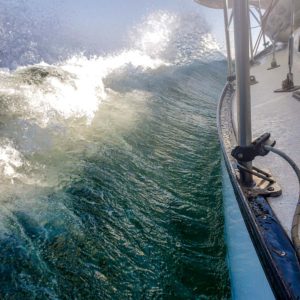
The wait had come to an end and we were ready to finally lay our eyes on the new-to-us Northwest 32, and head out on the Salish Sea. After a long day of patience, excitement, and hours at the customs dock, we finally watched Captain Vern motor into the harbor. We had a twilight pizza dinner on the boat as we enjoyed the beauty of the raised pilot house. Carefully designed and built by Bill McNabb, the wooden interior and layout with its raised dinette surrounded by windows, brought on a homey, cozy feel, with a place for just about everything. It was safe to say everyone enjoyed a deep sleep, knowing that this long, circuitous phase of the journey was over.
With our trip cut short and only three days left before we had to head home, we departed the marina early in the morning navigating towards Gabriola Island, where the boat was to stay for the coming months. With the spinnaker hoisted, we made our way along the coast to Galiano Island, sailing in the sunny midday heat. Around dusk, we dropped the anchor in Montague Harbour and caught the day’s last rays glinting off the water.
 On the second day of sailing, we admired more natural wonders — from an amazing sculpted sandstone shore made by the tide, to the seals perched on rocks as we passed. We also appreciated getting to know the boat, working the sails to squeeze out some extra speed out of the light wind. All of it made me think how fortunate I am, as a teenager, that my life has been full of salt and freshwater adventures ever since my parents introduced me to sailing when I was 5 years old.
On the second day of sailing, we admired more natural wonders — from an amazing sculpted sandstone shore made by the tide, to the seals perched on rocks as we passed. We also appreciated getting to know the boat, working the sails to squeeze out some extra speed out of the light wind. All of it made me think how fortunate I am, as a teenager, that my life has been full of salt and freshwater adventures ever since my parents introduced me to sailing when I was 5 years old.
We anchored that night in Herring Bay on Ruxton Island where the water was a beautiful turquoise, with colorful pops of contrast thanks to the purple and orange starfish scattered among the rocks. The next and last morning, we navigated through Gabriola Passage at slack tide. The day warmed, evaporating the cold mist and revealing the narrow passage between Gabriola Island and Valdes Island. We reached our mooring buoy in beautiful Silva Bay and the boat was unloaded and buttoned up until next time.
Motoring to shore, we reminisced about the trip and how it felt extra rewarding after the painstaking wait and numerous false starts. The long drive home was full of conversation planning for future trips across the Strait of Georgia to explore more of the British Columbia coast.


